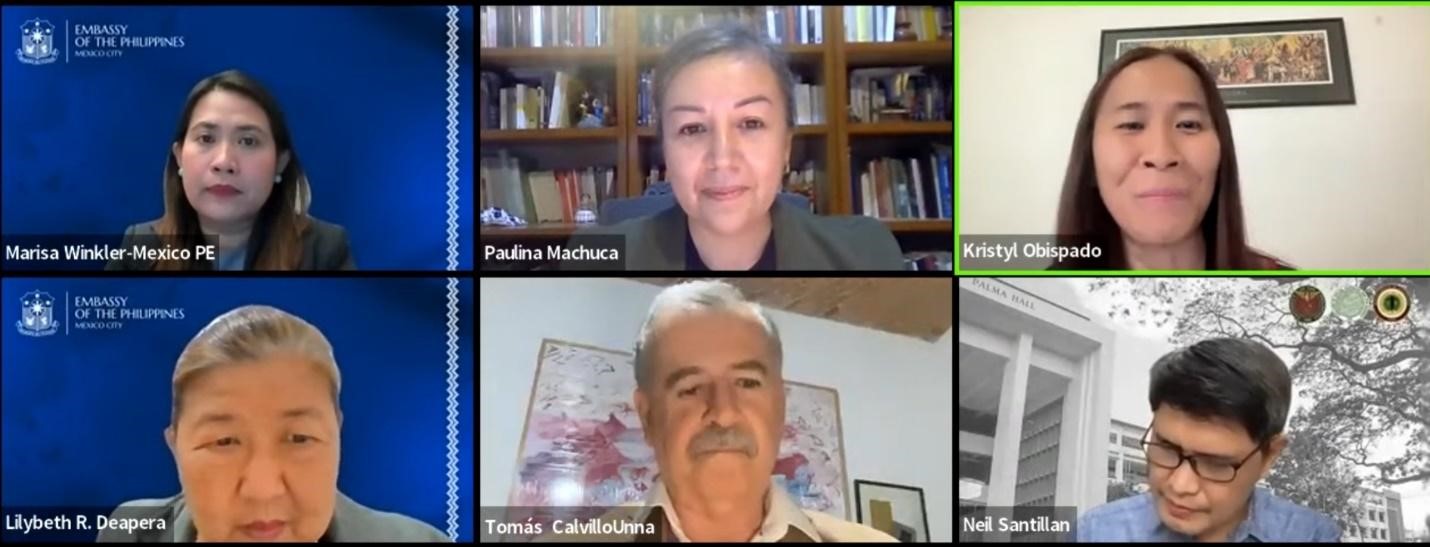PH Embassy in Mexico Retraces Rich PH-Mexico Historical Ties Through a Virtual Colloquium Series

MEXICO 15 January 2024 – The Philippine Embassy in Mexico has partnered with the University of the Philippines-Diliman, El Colegio de San Luis, and the Philippine-Mexico Studies Program based in National Autonomous University of Mexico to conduct "La Historia Olvidada: Filipinas-México 2023," a virtual colloquium series on Philippine-Mexico relations.
This virtual colloquium series highlights pivotal events and contexts that have shaped the engagements between the Philippines and Mexico, spanning from the sixteenth century to the contemporary period.
For 2023, the series featured three (3) distinguished experts on Philippines-Mexico relations, namely: Dr. Claudia Paulina Machuca from El Colegio de Michoacán who spoke on the overview of Philippines-Mexico relations on 17 October 2023; Dr. Cuauhtemoc Villamar, researcher and former diplomat, who discussed the Philippines and Mexico during the Baroque era on 24 November 2023; and finally, Ms. Maricruz Piza López, Ph.D. candidate from El Colegio de Michoacán who talked about Southeast Asian cuisine on the Costa Grande of Guerrero on 19 December 2023.
Dr. Claudia Paulina Machuca who talked about the overview of Philippine-Mexico relations said the Philippines and Mexico have “a historic relationship thanks to the Manila Galleon”. She discussed the influence of the Philippines in Mexico and vice versa especially on gastronomy. The Philippines introduced "tuba", a traditional Filipino alcoholic drink made from the sap of the coconut trees, to Mexico more than 450 years ago. Up to now, tuba is popular in some states in Mexico particularly in the states of Colima, Jalisco, Michoacan, Nayarit, and Guerrero.
In the second episode by Dr. Cuauhtemoc Villamar, the participants learned more about the Baroque culture as a means for promoting the Spanish culture and “for Spanish monarchs to tighten and consolidate their control on their colonies”.
According to Dr. Villamar, the expansion of the Baroque through the Manila Galleon triggered a variety of expressions and creativity. Societies in the Americas, Asia and beyond adopted the Baroque style especially in architecture. He mentioned the Miagao Church in Iloilo, Philippines as one example of Baroque architecture.
Meanwhile in the third episode, the participants learned that the Manila-Acapulco Galleon trade which lasted for 250 years also resulted in the exchange of cuisine between the Philippines and Mexico.
For those who missed the live stream, you may watch the episodes in the Embassy´s YouTube channel: //www.youtube.com/@MexicoPE2023">https://www.youtube.com/@MexicoPE2023.
The Embassy takes this opportunity to thank everyone who made the first three episodes a success.
We look forward to your continued participation in the remaining episodes of La Historia Olvidada which will be shown this 2024. END
For more information, visit https://www.mexicope.dfa.gov.ph or https://www.facebook.com/PHinMexico/.

